| Hollywoodland | Mar 25 2011 |


Confidential magazine, more so than other mid-century tabloids, could be counted on to report upon Hollywood’s interracial romances. Generally, the editors took no definitive stance on the divisive issue, but by placing such stories front and center were clearly pandering to their mostly conservative readership’s prejudices. In this issue from March 1956, it’s Billy Eckstine and Denise Darcel who are put under hot lights. Eckstine was a popular crooner sometimes referred to as the “black Sinatra”, the “sepia Sinatra” or even the “bronze balladeer”; Darcel was a French-born actress. When they met he was separated from a wife he would later divorce and was enjoying the NYC party circuit; she was an émigré from France circa 1947, newly divorced, and trying to establish a film career.
What broke them up? Even Confidential doesn’t know for sure, but career pressure is a likely culprit. Eckstine lost a movie contract when word got out that he was  spending time with Darcel. It was a significant blow, because leading movie roles for African-Americans—rare today—were pretty much non-existent back then. Eckstine had already carved out a pan-racial popularity in music, but was denied a chance to do the same in cinema. He wouldn’t appear in a movie as an actor until 1975’s Let’s Do It Again. His music career survived, however, and he remained a hitmaker for another ten years.
spending time with Darcel. It was a significant blow, because leading movie roles for African-Americans—rare today—were pretty much non-existent back then. Eckstine had already carved out a pan-racial popularity in music, but was denied a chance to do the same in cinema. He wouldn’t appear in a movie as an actor until 1975’s Let’s Do It Again. His music career survived, however, and he remained a hitmaker for another ten years.
As for Darcel, she made some Hollywood films, but never broke big. On a few French websites we learned that her career was possibly damaged by Howard Hughes after she refused his advances, but we can’t confirm that in a language we’re actually fluent in, so don’t quote us. We do know that at age forty she went on to a career in burlesque, which you see below. Asked why she had made the move into erotic dance, she replied, "Because that's where the money is." However, that period didn't last long—three years, more or less. In any case, Eckstine and Darcel certainly look happy on the cover of Confidential. The photo is from the party where they met. Asked that night about Eckstine by a reporter, Darcel said, “Billy is sooo wonderful!” 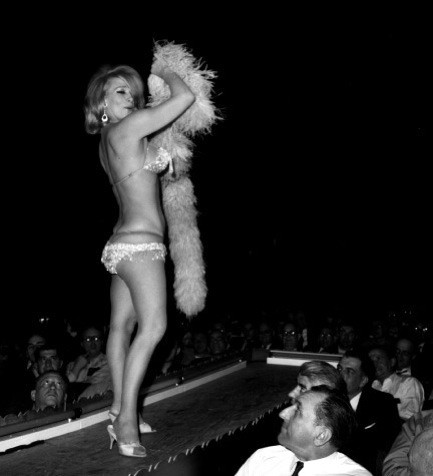
| Intl. Notebook | Sportswire | Apr 5 2010 |

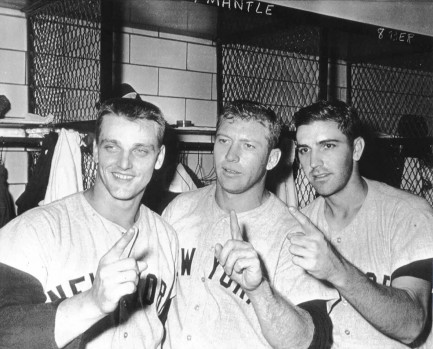
In the United States, Major League Baseball’s 2010 season opened last night with a couple of games, but today is the first full slate of baseball, and in commemoration we’ve tracked down a few images of baseballers from the past. We won’t identify every player, but we do want to make special mention of a few. In panel two below you see Ty Cobb spiking catcher Paul Kritchell in the nuts. Why? That's just how he rolled. Panel three shows Buck Leonard of the Homestead Grays running out a grounder against the Philadelphia Stars during the 1945 season, and below him is Oscar Charleston. Leonard, Charleston, and Josh Gibson, in panel eleven, are all Negro League players who were inducted into the Major League Baseball Hall of Fame way back in the early seventies. All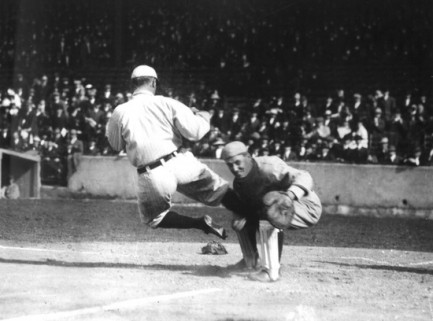
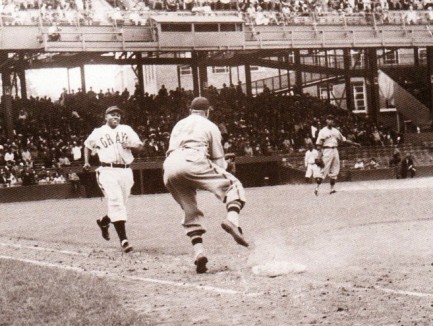
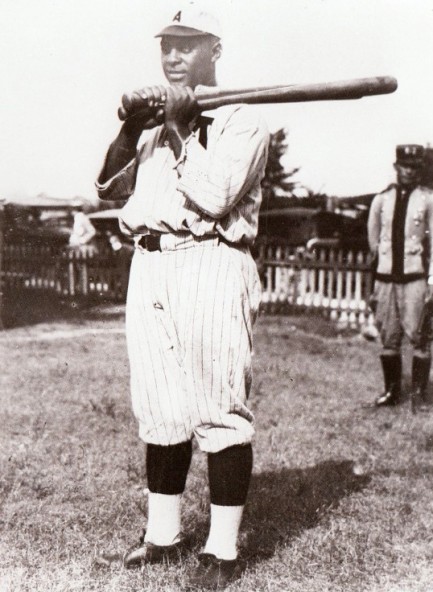 three are considered by sports historians to be among the best who ever played their positions, though they never played in the Major Leagues. Lastly, in panel fourteen you see Lefty Grove, one of the great pitchers of his era, frozen in time just before a game, forever young.
three are considered by sports historians to be among the best who ever played their positions, though they never played in the Major Leagues. Lastly, in panel fourteen you see Lefty Grove, one of the great pitchers of his era, frozen in time just before a game, forever young.
We decided to post all these photos because we’re basically a history site, and baseball, more than any other American sport, is inextricably bound with the country’s history. When you think of Ted Williams, you don’t just think of baseball—you think of World War II. When you think of Joe DiMaggio, you think of Marilyn Monroe and her tragic ending. Hank Aaron, chasing a sacred record with grim determination, is part and parcel of the civil rights movement—not for anything he said, but just because that was his place in time. For every era of baseball, the faces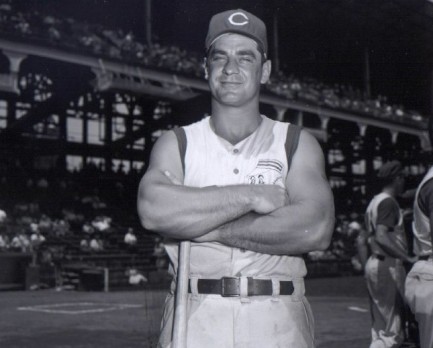
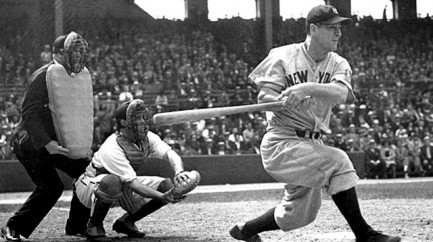
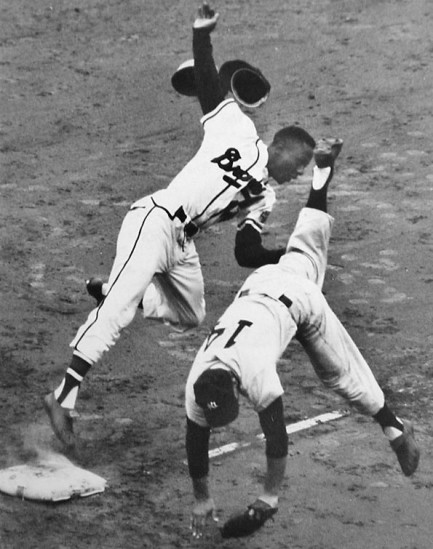 conjure moments on the field, but also events far from the confines of the ballpark. This is what makes the boys of summer such a special group. Seasons change, winter inevitably comes, careers and lives end, but their niches in history are secure. Meanwhile these images are a reminder of just how long and wonderful the summer can be. Enjoy the season everyone.
conjure moments on the field, but also events far from the confines of the ballpark. This is what makes the boys of summer such a special group. Seasons change, winter inevitably comes, careers and lives end, but their niches in history are secure. Meanwhile these images are a reminder of just how long and wonderful the summer can be. Enjoy the season everyone.
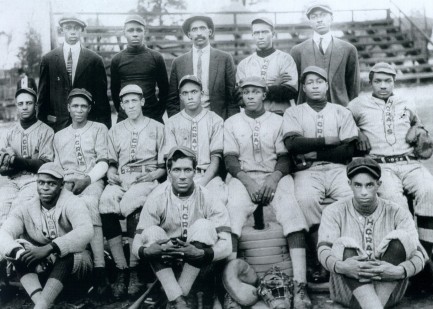
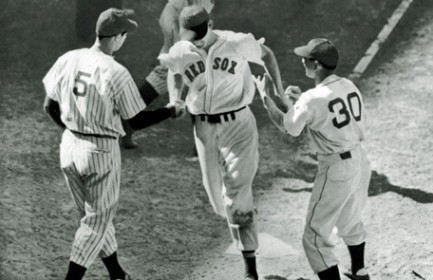
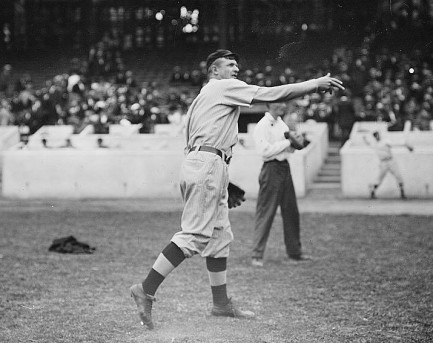
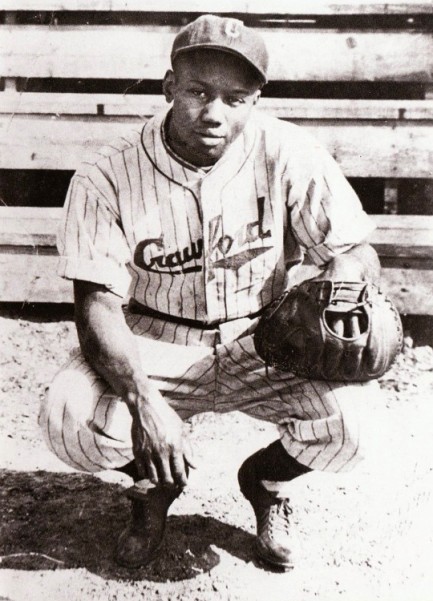
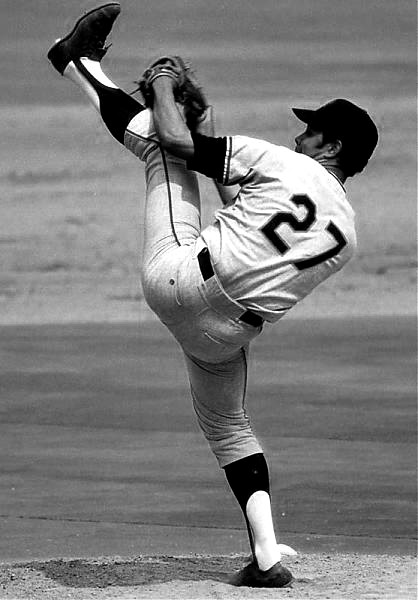
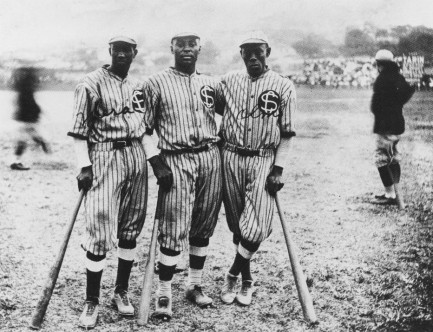
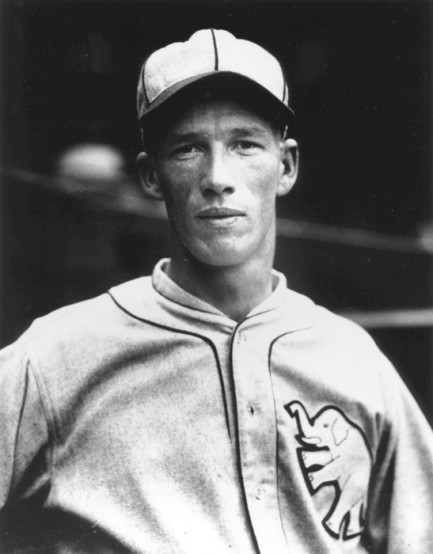
| Sportswire | Oct 8 2009 |

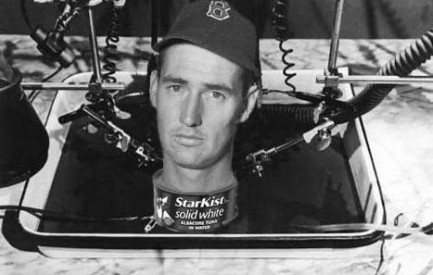
Just in time for Major League Baseball’s postseason, a former employee of the cryonics company Alcor Life Extension claims in a new book that Hall of Fame baseball player Ted Williams’ frozen head was mistreated at the facility. Former chief operating officer Larry Johnson writes in his book Frozen: My Journey into the World of Cryonics, Deception and Death, that an Alcor official used a wrench as a—well, let’s just say it—as a bat, to knock a tuna can loose from Williams’ head.
According to Johnson, the cans were used as head pedestals, but only after their contents had been fed to the Alcor cat. Instead of praising his coworkers for their spirit of improvisation, Johnson is critical of these practices. To bolster his claims, his book includes a photograph of an upside-down severed head with what indeed appears to be a tuna can stuck to it, though the head pictured is not Williams’. But Johnson did describe the former Red Sox outfielder’s earthly remains, writing: “The disembodied face set in that awful, frozen scream looked nothing like any picture of Ted Williams I’ve ever seen.”
Alcor has responded to the macabre allegations by threatening to sue everyone in this world and the next. In light of that announcement, we’ll just forego joking about company officials making bets about whether their tongues would stick to the heads. “Forego” means to go ahead and do it, right? We better look that up.




































































